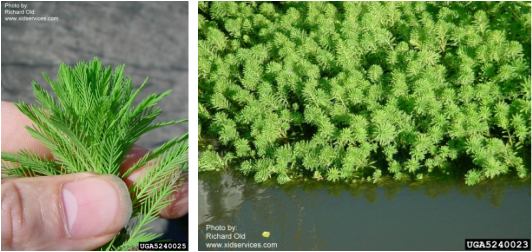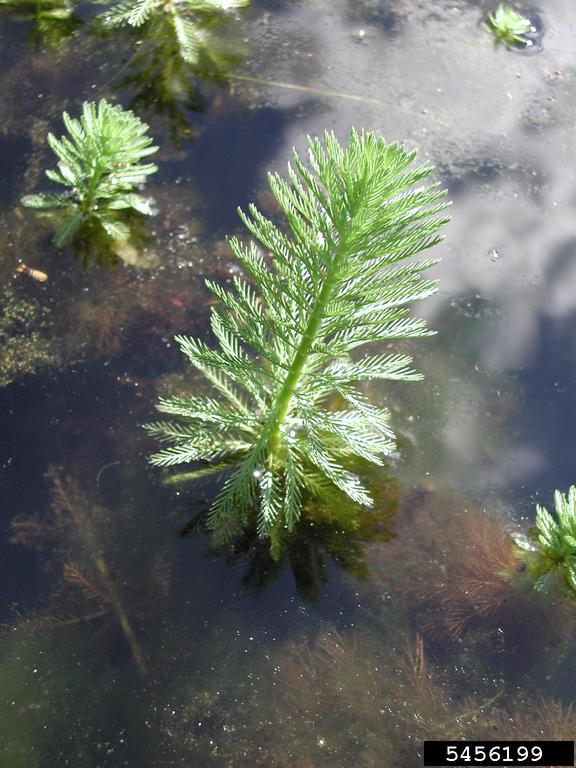Parrot featherMyriophyllum aquaticum
Parrot feather has invaded the coastal regions of the United States. In North Carolina, it forms dense mats in the freshwater aquatic habitats and wetlands of the coastal plain and piedmont regions. It reproduces through dispersal of stem and rhizome fragments. It gets its name from the feathery leaves (0.6 - 2") which can emerge or stay submersed. Emerged leaves are stiff and upright, submerged leaves are limp. The feathery appearance comes from being pinnately compound with 20 - 30 divisions per leaf. They whorl around a bluish-green (submerged) or brown (emerged) stem. The emerged stems also produce small white flowers during the spring. Fact Sheet: Parrot Feather
|
Photo credits: Richard Old, XID Services, Inc., Bugwood.org
Photo Credit: Leslie J. Mehrhoff, University of Conneticut
|


